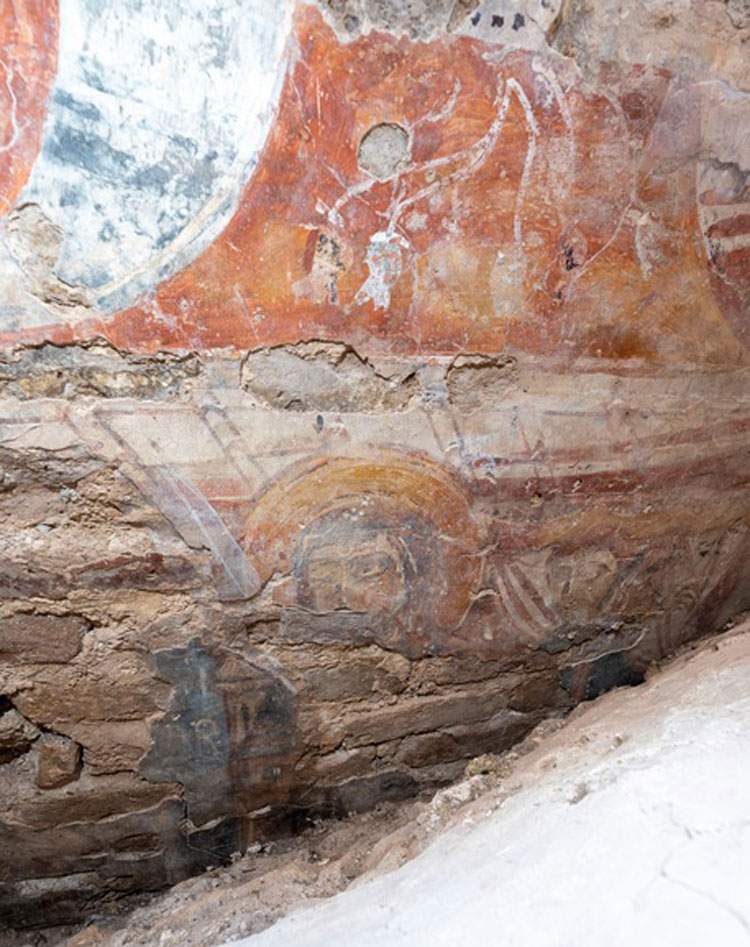During conservative restoration work in the Basilica of Santa Maria Assunta in Torcello, Venice, fragments of ancient frescoes that decorated the church between the 9th and 10th centuries, before the mosaic decoration, are found. These are the oldest in the Venetian area.
The interventions were accompanied by a study on the building quality, the archaeological stratigraphy of the elevations and the characterization of mortars and plasters, and it was possible to collect unpublished data, exceptional from a historical and artistic point of view, to learn about one of the most significant early medieval monuments in the Mediterranean.
The rediscovered frescoes constitute a fundamental piece for the reconstruction of the artistic history not only of the Torcello church, but of the entire Venetian and Adriatic early Middle Ages: they are preserved high up toward the roof, above the vaults, and have been covered by a layer of rubble since the Middle Ages. For this reason they have never been seen or studied until now.
In particular, a pictorial panel with stories of the Virgin has emerged, where Mary and a handmaiden are depicted, and in another panel, perhaps related to a parallel cycle, a story from the life of St. Martin is told instead.
The images of the saints are accompanied by painted captions in early medieval characters. According to archaeologists and epigraphists from Ca’ Foscari University of Venice who collaborated on the work, the frescoes and captions make it possible to reconstruct the decorative appearance of the church before it was covered by 11th-century mosaics.
The state of these frescoes is being studied, and possible restoration work will be agreed upon with the Soprintendenza staff.
The integrated reading of the data collected during the restorations, new frescoes, masonry analysis, and archaeological readings seem to assume that the form and volume of the present church can be attributed to the 9th century. In those years, which coincide with the construction in Venice of the Doge’s Palace and the first church of St. Mark’s, an ancient 7th-century church building would have been doubled in Torcello, the original apsidal basin of which can be understood today. This large new church incorporated the previous one, adding a martyrial and processional route that passed behind the altar.
The apses of this building were decorated with frescoes, the floor was black and white mosaic, and there were many sculptures: liturgical furnishings of great artistic value, which fit well into the Adriatic artistic tradition of the Carolingian age.
Conservation restorations are highlighting how this church was later transformed in the 11th century to allow for the new mosaic decoration, namely the one we still admire today.
The restorations are funded by Save Venice, as part of a program to secure the church building shared and discussed with the Patriarchate of Venice.
With this extraordinary project, Save Venice is celebrating fifty years of major restoration work in Venice.
The consolidation works in Torcello, are one of the most important sites that the Patriarchate of Venice is carrying out with the high supervision of the Soprintendenza Archeologia, Belle Arti e Paesaggio for the City of Venice and its lagoon; they are part of a planned plan of interventions that has been accelerated by the consequences of the last great high water of 2019, which caused serious damage in more than eighty Venetian churches, for which as many worksites have been activated, thanks also to contributions from the State.
Ph.Credit Ansa
 |
| Venice's oldest frescoes discovered. They are found in the Basilica of Torcello |
Warning: the translation into English of the original Italian article was created using automatic tools. We undertake to review all articles, but we do not guarantee the total absence of inaccuracies in the translation due to the program. You can find the original by clicking on the ITA button. If you find any mistake,please contact us.